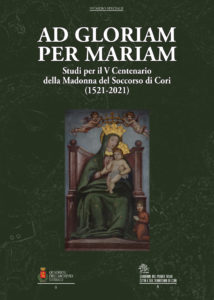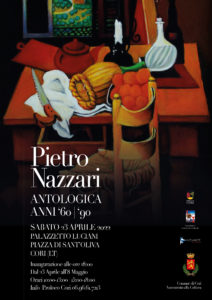The oratory of St. Annunziata, National monument, is a pearl of fifteenth-century painting and it is known as “Chapel of the Scrovegni of the lower Lazio”.
Strategic Position
Going upstairs, you will find in front of you a small pictorial wonder nestled in greenery like an oasis on a busy street: the oratory of St. Annunziata (in Cori), also known as the Chapel of the St. Annunziata. Incorrectly defined as a “church”, it was actually a local attached to the actual church of St. Sylvester, since the sixteenth century the church is dedicated to the Holy Crucufix.
The building is nowadays surrounded by houses, but until the 1950s it was in open countryside, on the main Cori’s access road, that linked the city to Appia street and Rome. In the Middle Ages, magistrates coming from Rome used to stay in Cori, they were allowed to get inside the walls only after having sworn allegiance to Cori’s statutes. It’s not a coincidence if the church was consecrate to St. Sylvester: protecting citizens from the dangers of the marshes was supposed to be easy for someone who defeated a dragon.
Sober, but only outside
The construction of the oratory began in the second decade of 1400s and finished in the subsequent decades. The commissioner was Cardinal Pedro Fernández de Frías, pontifical vicar and rector for Sabina and the district of Campagna and Marittima (Latium), wich Cori was part of. The inscription on the entrance door says: “De Spagna fuit qui me legerit dicat unu(m) pater n(oste)r p(ro) a(n)i(m)a mea” (“He was Spanish. Who will read me, say the Lord’s prayer for my soul”).
Near the door, the most ancient existing coat of arms of the municipality of Cori, which took part in construction. The olive branch on the shelf above the entrance is probably a reference to St. Oliva, patron of the city.
The buildings around the oratory and the church – a sacristy, the cell of the hermit keeper of the church, the bell tower, a new hermitage – were added during restoration work in 1600 and 1700. Looking out the gate of the hermits’ garden, you can see the remains of the hermitage.







